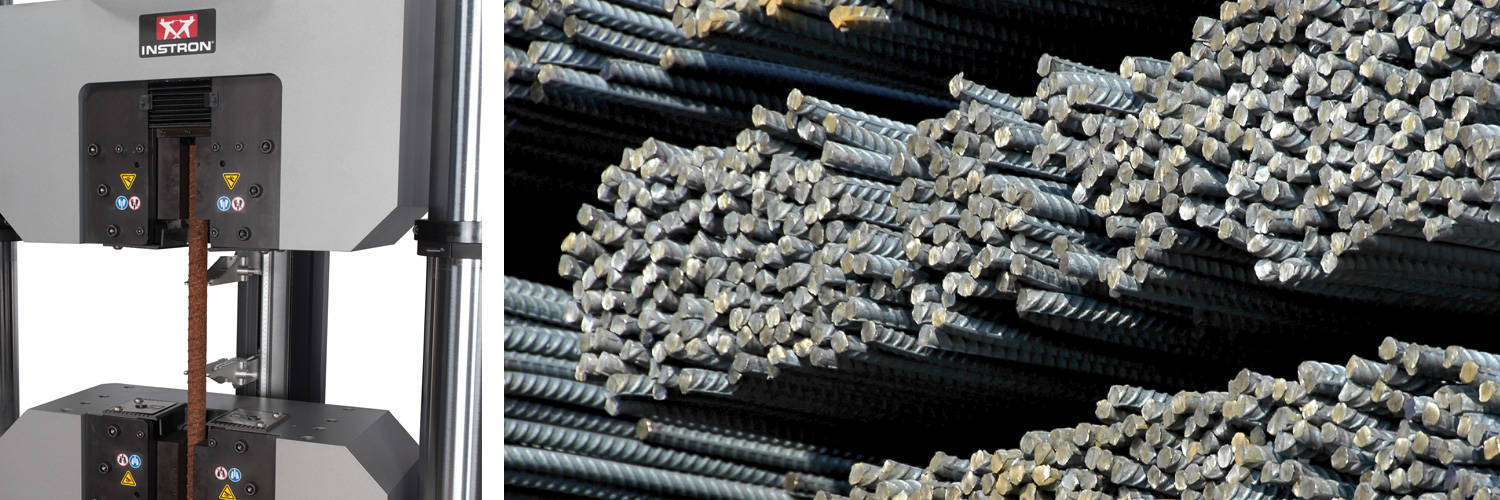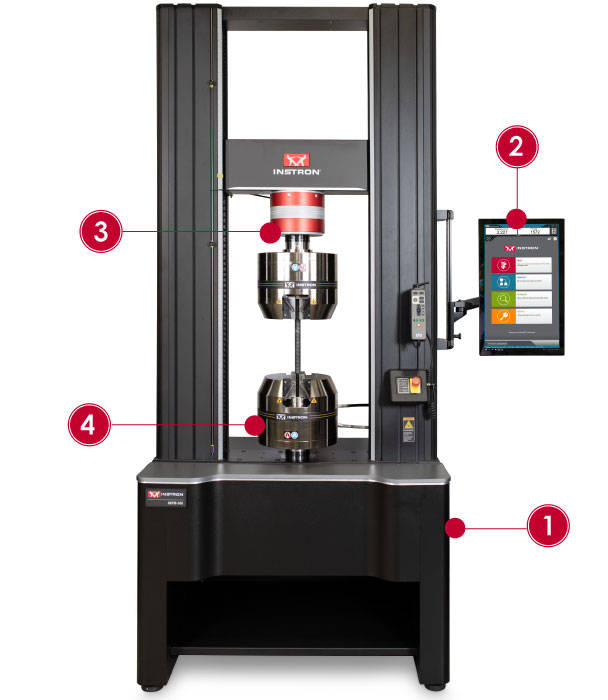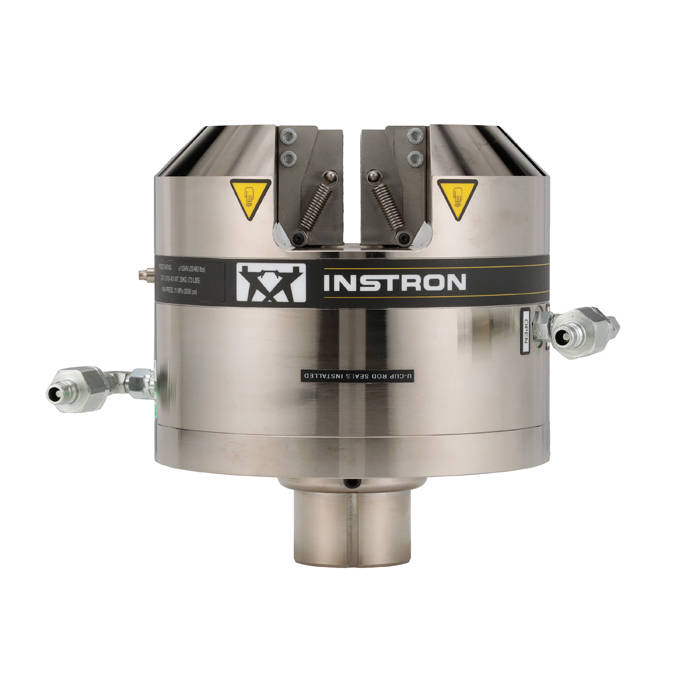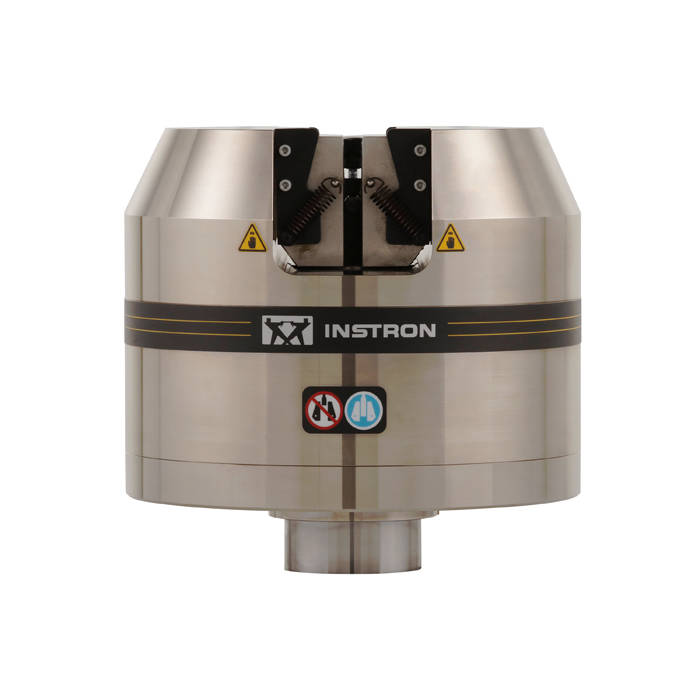TEST CONTROL
Elastic Region
The elastic region or straight line portion of the test as seen on the stress-strain plot can often exhibit some non-linear behavior initially due to further straightening of the rebar specimen. If using an extensometer, this may show up as slightly negative strain at the beginning of the test and is generally considered normal for rebar.
When testing according to ASTM A615, the latest edition of ASTM A370 should be referred to for proper test control and target speeds permitted in the elastic region and until the onset of yielding.
When running the tests on servo-controlled systems, it is important to keep the following scenarios in mind. If using crosshead or actuator displacement control it is generally acceptable to use the same control and speed through both the elastic and yielding portions of the test. However, if stress or strain feedback control is used, the test must switch to crosshead or actuator displacement control just prior to or at the onset of yielding.
Plastic Region
As permitted by ASTM A370 and thereby ASTM A615, it is acceptable for the test speed to be increased after yielding has completed. For servo-controlled machines, the best way to control the test during this final region is from crosshead or actuator displacement feedback (same as yielding). However, the speed can be increased according to the standard being followed. This allows for the test to complete in a shorter period of time while still producing acceptable and repeatable results.
最高クラスの6800シリーズ試験機のカタログ
インストロン6800シリーズ万能材料試験機は、他に類のない精度と信頼性を提供します。特許申請中のオペレーター保護機能に基づき、最新のスマートクローズエアキットおよび衝突緩和機能を搭載した6800シリーズは、材料試験をかつてないほどシンプルに、スマートに、安全にします。
Bluehill Universalのカタログ
Bluehill Universalソフトウェアは、タッチ操作と直感的なユーザーエクスペリエンスを念頭に構築されています。標準装備の試験メソッド、数秒で行われるQuickTest、強化されたデータエクスポート、そしてサービスとの直接通信を提供する新機能Instron Connectなどの機能が、これまでよりもシンプルでスマートな試験を可能にします。Bluehill 2やBluehill 3などの旧バージョンソフトウェアからは、簡単に最新バージョンのBluehillにアップグレードできます。
高容量万能材料試験機のカタログ
インストロンの高容量試験機には、電気機械および高荷重の油圧式試験システムが含まれ、引張および圧縮用途に対応します。荷重容量は100 kN~2,000 kNです。
油圧式サイドアクショングリップ(DuraSync)
インストロン油圧式サイドアクショングリップは、高荷重試験を前提に設計されています。試験片に対し、引張荷重とは無関係に、試験方向に垂直な一定の把持力を保ちます。
2743-401油圧式くさび型グリップ
インストロンの100 kN油圧式くさび型グリップは、高荷重試験のための革新的なソリューションであり、グリップ機能、利便性、オペレーターの安全性が強化されています。
自動接触式伸び計 - AutoX 750モデル
AutoX 750は、高分解能で長伸度の自動接触式伸び計です。電気機械式の3300、3400、5500、5900、6800シリーズの卓上型または床置型システムに加え、LX、DX、HDX、KPXの静止型油圧式試験システムに取り付けることが可能です。プラスチック、金属、バイオメディカル、複合材料、エラストマーなどの用途に適しています。AutoXは、最大750 mmの移動量と±1 μmの精度を備えています。



